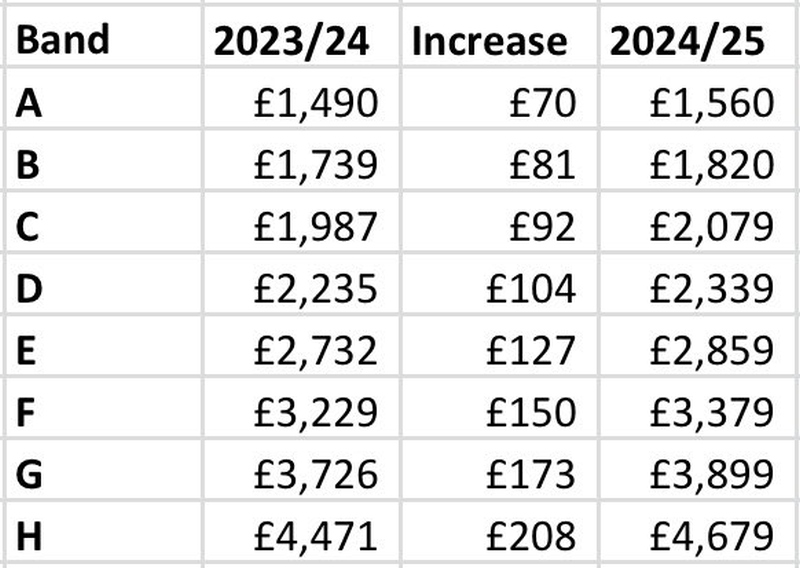Banded together to fight the band
A decades-long council tax battle has been won netting residents of a retirement village up to £9,000 each after it was ruled all 113 people there had been in the wrong rate band. Their victory means the former Band E and D homes have now been reclassified and moved down one level to Band D and C – with the rebate backdating back to 1993.
Those who have live at the Oaklands Park retirement village in Redhill, built in 1989, will also be saving about £500 a year going forward at the former B and E homes. Marilyn Rodd, described as a “force of nature”, chairs the Oaklands Park Residents Association, and it was her refusal to give up that ultimately won the day. She said: “We’re just in disbelief really. It was a complete turnaround we didn’t expect it, we didn’t expect it to go back that far, its a huge result for income-limited pensioners, £500 a year in your council tax for couples. It’s disbelief and absolute joy and everyone is thrilled. There is happiness at Oaklands Park.”
The Redhill retirement village features 113 one or two-bed flats, bungalows, and houses. They were originally sold as top-of-the-range homes because, at the time, the concept of a retirement village was unusual. Their prices soon came crashing down as people sold and moved on – before finding their natural market value at significantly less than originally priced.
Four years after they were built the Government introduced Council Tax – where people are charged based on the value of their property. The Valuation Office Agency, responsible for setting council tax bands, looked at the prices the homes were originally sold, and their high bands have remained.
That ruling, which residents have been fighting against ever since, has meant the retirement community has been paying Band E and D rates for their small flats, bungalows and houses for years when they should not have been.
Mrs Rodd said: “We did it as a collective. It shows the power of banding together. It took a lot of research to understand how it works. It was doggedness and a lot of research and most of all it was getting everybody working together.”
From the start, they had the support of their MP and local council. Mrs Rodd said: “People move down from bigger houses and are shocked to find out its still band E. Every time someone moves in they query it. But we haven’t taken no as an answer.” She added: “The big difference was – they would compare the houses individually within the estate and say ‘your house is in the same band as your neighbour’.
“We had to get them to look outside the estate.”
She added: “We are very grateful to the VOA and the council that they’ve decided to correct this long standing anomaly or injustice. It’s nobody’s fault as such it’s just the system.”
Councillor Jonathan Essex (Redhill East, Green) told the Local Democracy Reporting Service: “This lady took up the challenge, pulled together a comparison of properties to show the homes were out of line. It was submitted and lost, but then it was challenged and she needed to get every single resident on board, no mean feat. Then we finally heard back.
“This lady was a force of nature, it was her determination and persistence that made it all happen and it was a pleasure to support her. This gives people hope.”
A Reigate and Banstead Borough Council spokesperson said: “While the setting of Council Tax bands, and any associated appeals, are the remit of the Valuation Office Agency of HM Revenue & Customs, we are responsible for collecting Council Tax. We want people to pay the right amount and, where refunds are necessary, we aim to refund taxpayers as quickly as possible.”
The VOA said it could not comment on individual cases but that it works “extremely hard to ensure that all domestic properties are banded correctly” for Council Tax purposes. They added: “If a taxpayer thinks their band is wrong, they are able to contact us to submit a formal or informal challenge.”



